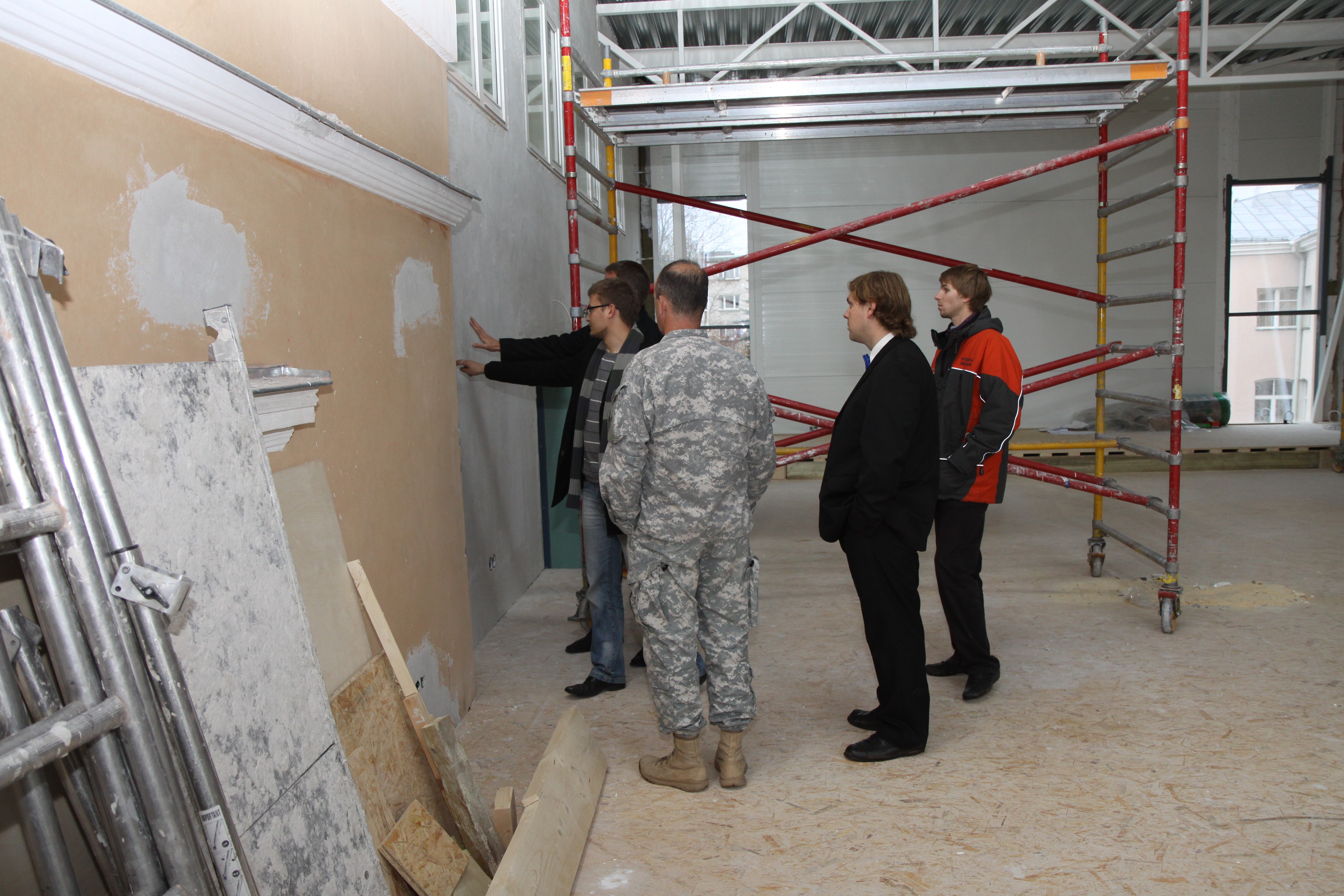TARTU, Estonia (Dec. 14, 2010) -- Providing a sense of community between students with special needs and traditional students can be a challenge for any school. At the Herbert Masing Special Needs School in Tartu, those challenges are being met by a $375,000 renovation.
In a partnership with the U.S. European Command Humanitarian Assistance Program, the U.S. Army Corps of Engineers Europe District is renovating a four-story building, connecting two existing buildings, and adding a third floor assembly area while maintaining the historical integrity of the 19th Century structure.
"One of the main portions of the renovation is providing the assembly room," said Brian Trzaska, a civil engineer for special projects with the district. "It's designed to assist in providing a common space to encourage the sense of community needed when teaching children with disabilities."
According to Estonia's legislation, students with special needs may study at traditional schools or schools with tailored education programs, as long as they receive the support they need. Some of that support includes a special-education teacher, speech therapist, smaller class sizes and individual education plan.
In a 2002 special session on children in Washington, D.C., the minister of Social Affairs described some of the social changes and challenges in their country.
"The birth of each and every child is crucial for the survival and sustainable development of our nation," said Siiri Oviir, a former minister of Social Affairs. "In Estonia, children, also children with special needs, have better opportunities than ever to acquire quality education that meets their interest and abilities."
The project also includes renovating a basement in a building directly behind the schools, that is designed to house a playroom, includes construction of a new kitchenette, replacement of fire-rated interior doors, heating and ventilation systems for restrooms and upgrading the electrical system.
The renovation of the buildings, expected to be complete in the spring of 2011, required demolition, repair and replacement of interior and exterior finishes. Additionally, the project sought to build and bridge the special needs school to the already existing traditional school.
Bridging the two buildings together is not the challenge, maintaining the historical integrity is. The buildings have to be watertight, according to Trzaska. But nothing can alter their historical appearance.
According to Alar Loo, a project engineer with Tartu Ehitus As, the building was built around 1870 and was an intricate part of Estonia's history. He says it was originally an administration building and played a major role in the treaty in 1920. The building location directly across the street is where Loo says Estonia leaders signed the Tartu Peace Treaty.
Estonia maintained its independence for 22 years until World War II, when it was occupied by the former Soviet Union.
"Without altering the building, custom flashing had to be made to marry up to the existing profile of the historical portion of the building to make the two buildings watertight," said Trzaska. "Our goal is to provide improvements that will make the everyday lives of the students and teachers easier. I believe with these key improvements, we have reached our goal."
"The glass on this building was designed to reflect the facade of the historical building where the treaty was signed that liberated Estonia," said Loo. "By reflecting the image of one building onto the other, the two historical buildings are connected in history and appearance."




Social Sharing